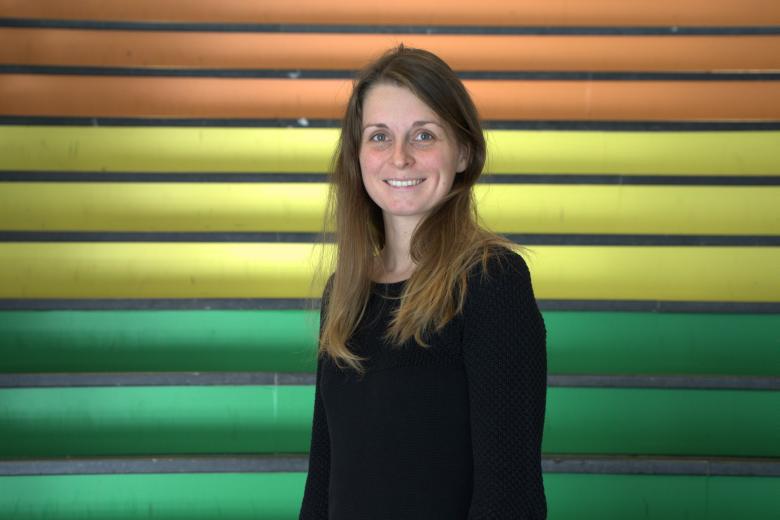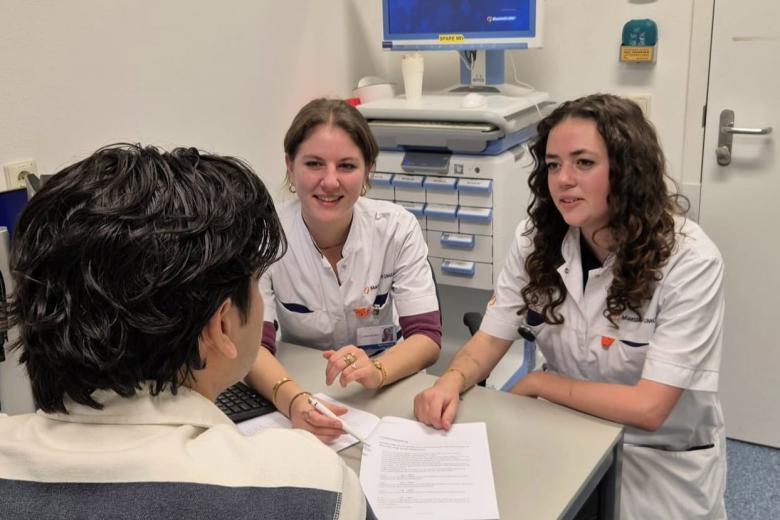Mimic the true nature of tissues by building complex in vitro models
Paul Wieringa, assistant professor at MERLN, grew up in Canada, where he began his journey into science through a technical study. His passion for technology eventually brought him to Maastricht, where he focuses on developing in vitro models that mimic the true nature of tissues. He is currently working on models to study endometriosis and the fallopian tube, among other projects. Paul Wieringa: “I enjoy working on these kinds of innovative approaches. It allows us to explore questions that we previously were unable to”.
An engineer in biology
Paul Wieringa: “I’m an engineer at heart, no doubt about that. However, during my Bacherlor’s, I developed an interest in neuroelectric interfaces. While I was fascinated by robotic limbs, I realized that the real challenge was the connection to the human body. That’s why during my Master's I took my first steps into the biological world. I found a researcher in the Netherlands at University of Twente, Wim Rutten who was working on neuro engineering. I was free to come. For me coming to the Netherlands had also a bit of a romantic notion as both my parents were Dutch. During my Master's, when I was still focusing on the nerve aspect, I also then became familiar with dealing with in vitro cell growth. During my PhD I became more focused on looking at the cell growth aspect and less on the electronic stuff.
I did some ‘on a chip1’ things before it was labeled that way. Aiming to create 3D environments that better mimic the human body, while allowing engineering control. At the University of Twente, I became more immersed in this field. I finished my PhD in the Regenerative Medicine group of Clemens van Blitterswijk. After moving to Maastricht my focus shifted to how nerves interact with other tissue and on building environments where I can guide axon growth towards model tissue, trying to understand the interactions”.
If you cut the nerve, you don't know what you're really investigating
Research
Wieringa: “My research primarily focuses on developing models that accurately replicate tissue environments and their associated nerve connections. This innervation is vital for the body’s functionality and for communication between the brain and various body parts. A clear example of this is in muscle movement: when you think of moving, signals travel from your brain down the spinal cord to motor neurons, which then activate the muscles. Your muscle moves. To be able to look at the interactions, I'm trying to build systems that help us better understand how these interactions work. More specific in the context of disease, we need systems that help us understand what the mechanisms of the disease are and what it is we can target.
In the past, I think investigating the nervous system has often been oversimplified. You can’t really investigate the nervous system by cutting certain nerves in the body and see what happens. Because you've just removed it! Nerves branch out and have many interactions, so if you cut the nerve, you don't know what you're really investigating.
A system like LEGO-building blocks
That’s also why I'm working on a universal in vitro system like LEGO-building blocks. It will enable you to plug-and-play in a three-dimensional environment where you can put in the nerve you’re interested in, and the tissue you’re interested in, have them grow together and then monitor the response. For example, in studying diabetes, you can look at how certain nerve populations might interact with the beta cells in the pancreas. For us it is important to study the signals that tissues receive and transmit to better understand their functions and the mechanisms of diseases.
Oviduct on a chip-model
Another example of interaction in tissue we study, together with GROW researchers, is the one between nerve fibres and endometrial tissue that has kind of floated into the intestinal wall or the ovary as is the case in patients with endometriosis. We're looking at how the pain neurons are recruited. How they grow into this tissue where they shouldn't be. And what the interactions are between that tissue and the nerve fibres. We hope to find the explanation why some people have pain and others don't.
Advanced microscope
I’m also creating a new tissue model for the oviduct or a fallopian tube on a chip also in collaboration with GROW. I was lucky to receive ERC funding for this project, which helps me improve my ability to create in vitro models and develop platforms for better observation and data collection. It also enabled me to bring in a very nice microscope. In IVF the culture medium used does not accurately reflect the conditions in the oviduct, where the initial cell divisions occur shortly after fertilization. While we have insights from animal studies, much remains unknown in human. But studying and potentially interfering with human reproduction faces ethical challenges. Therefore we need a reliable model as an alternative. Although it is still early in our investigations, we hope with our model to gain a better understanding of the processes occurring in the fallopian tube. It would be wonderful if our findings will lead to implications for the clinical practice in IVF”.
While I am pleased with my in vitro systems and the engineering involved, there’s always a desire for genuine clinical impact.
Impact
Wieringa: “We have some exciting ideas with immediate potential for clinical translation that could significantly impact patient care, but securing appropriate funding is challenging. One reason we moved from the University of Twente, was the unique connection we have here to the clinic in Maastricht. This motivates me to think about the real-world implications of our work. While I am pleased with my in vitro systems and the engineering involved, there’s always a desire for genuine clinical impact.
Clinical applications
My impact now is really in the technology. What I hope to achieve is to make these new, previously non-existent in vitro environments. With a researcher in Gent I’ve developed a very nice technology, that works as a template to make complex 3D structures with cells. We are trying to make it into something that is available for other researchers. This has the potential to one day go into clinic. When we get at that point, we will really have a broad impact.
Surprising outcomes
Regarding the in vitro aspect, I’m most excited about the discoveries we will find. Research often starts with an idea, and results can either confirm or challenge the hypotheses, leading to deeper understanding of the interactions. The exploration of innervation and oviduct dynamics in my research is relatively novel, making our findings all the more surprising. Almost every question I look at has not been very well explored before. That’s also what I experience with my students, who can work with the fancy new microscope. With that we often reveal unexpected insights, impactful discoveries that until now were hidden”.
1The term ‘on a chip’ refers to miniaturized laboratory platforms that replicate biological environments on a small, often silicon-based chip. These devices enable researchers to study the functions and interactions of cells, tissues, or organs in a controlled, small-scale model.
Text: Eline Dekker
Photo: Joey Roberts
Also read
-
Macrophages as key to treating liver fibrosis
Sabine Daemen is researching how certain macrophages can slow down fatty liver disease and fibrosis in order to develop new therapies.

-
Teacher Information Points at UM
UM faculties now host Teacher Information Points (TIPs) that offer local, “just-in-time” and on-demand support for teaching staff. The aim is simple: to provide help that is closely connected to day-to-day teaching practice.

-
More than a student job: five alumni about their unique role in groundbreaking vascular research
What is it like to take part in cutting-edge vascular research as a student, standing in the operating room, directly responsible for handling patient material? Five alumni of the Maastricht MAPEX student team share what they learned, the challenges they faced, and how this experience shaped their...
